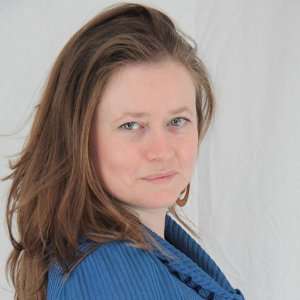It is pleasing to see concerts of music by living composers well attended, and such was the case at “A Timeless Beauty”, part of the Southbank Centre’s year-long celebration of contemporary music The Rest is Noise. This concert’s theme was “Politics and Spirituality”, and looked to the former Soviet Union for inspiration.
Two composers on the programme provided contrasting examples. Both extremely spiritual, their responses to Soviet oppression were markedly different. Arvo Pärt struggled with the Soviet authorities to be allowed to emigrate in 1980, while Sofia Gubaidulina only relocated to Germany after the fall of communism.
Their musical responses are similarly varied. Offertorium, for violin and orchestra, was Gubaidulina’s breakthrough piece, and had to be smuggled out of the Soviet Union for its first performance by dedicatee Gidon Kremer in 1981. Its starting point is the theme from J.S. Bach’s Musical Offering, here filtered through Webern’s “Klangfarbenmelodie” transcription for orchestra (where the theme is passed around different musical instruments to make use of different timbres).
Not having heard this piece live, I found it surprisingly disorienting when the London Philharmonic Orchestra began to play this stereo effect. However, the variations that followed were smoother, almost romantic in their interpretation by conductor Tõnu Kaljuste, which settled the nerves. The opening section is punctuated by the main theme three times with variations for soloist and orchestra, truncated on each repeat by the removal of the beginning and end note, denoting the offering up of the music.
The orchestra became colder and harsher in tone in the second section, excellently invoking both the anguish of the suffering on the cross and the menace of the Last Judgment intended by Gubaidulina. This was followed by a cadenza performed with such intensity by soloist Sergej Krylov that he needed to remove stray hairs from his bow. Dissolution came next, and the orchestra seemed to be dragging us down towards hell.
A shorter cadenza leads to the hymn, whose entry has the potential to be a deeply emotional experience, full of the warmth of salvation, a real surprise after all the agony and turmoil. Yet here, after an impressive performance both technically and interpretatively by the London Philharmonic and Krylov, it took a while for the tone to shift. Once it did, we were transported to a shimmering heaven, ending with Krylov holding a high D. It was a slightly anxious end to an otherwise assured performance, which was well received by the audience, including the composer herself.
I had some misgivings about the programming of the second half. All three pieces were of Pärt’s distinct tintinnabulist style, which I was not certain would sustain interest over the course of 45 minutes. I felt that a third composer (perhaps Górecki?) would have provided a musical bridge between Gubaidulina and Pärt in keeping with the concert’s theme. As it was, the biggest problem faced by all three Pärt works were largely acoustic. The Royal Festival Hall felt slightly too large a space for the works, even with the healthy performing forces on offer.
The Magnificat and Cantus in Memoriam Benjamin Britten were performed as one entity, to good effect (if perhaps demonstrating the similarity of programming that had concerned me). The London Philharmonic Choir was at its best in the larger tutti sections of the Magnificat, particularly where the sopranos felt they could open up to full voice. The soprano soloist was especially good – though intoning on one pitch, the solo requires excellent ensemble work, often with the tenors and basses, who in this concert were on the other side of the choir stalls. The Cantus was faster than I personally like, but very powerful in the lower registers, with dynamic range excellently controlled by Kaljuste.
The Berliner Messe was written for the German Katholikentag in 1990, and in it Pärt slightly modifies his sound to produce what is indeed a Catholic work. Its opening Kyrie presents its first challenge, as the choir and orchestra engage in a verse-and-response-style dialogue. The potential for pitch drift was high, but here, both ensembles were more than equal to the task. The Gloria sounded particularly Catholic, while the Alleluias and Veni Sancte Spiritus, movements added to create a Pentecostal Mass, had some great unison work in the plainchant sections. The Credo, however, felt a little slow and somehow in need of both more Catholic fervor and dancelike movement. The Sanctus was the highlight of the piece. Sitting low in the register for the voices, it had sublime emotion bubbling under the surface. The concert closed with a plaintive Agnus Dei, the plea for mercy hanging in the air after the final note had sounded.


